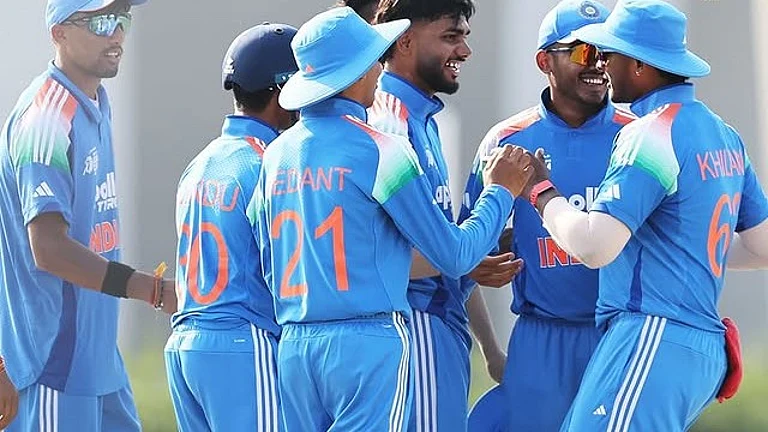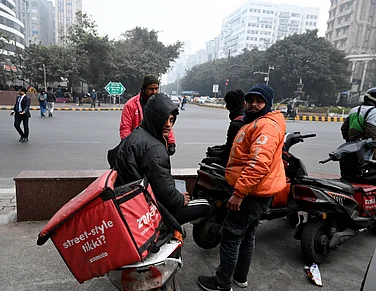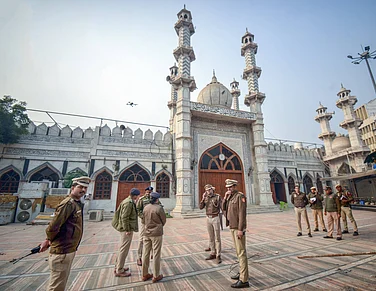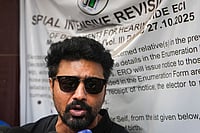When Kerala faced its worst flood in a century, the tribal population was first in the firing line. The hills of Wayanad, Thrissur, and Idukki, where dams were opened for the first time in years, are where Adivasi communities are concentrated in the state. Outlook decided to visit some of these colonies after obtaining clear leads from activist sources that tribals were still stranded even as late as August 25, and that neither relief nor media attention was reaching them.
When we telephone Thrissur’s superintendent of police (SP), he is dismissive of the notion that Adivasis have been affected on a large scale. The district collector has little to add, directing us to the tribal development officer (TDO)—who says much the same, and warns us that there could be restrictions on entering the colonies, although media may be allowed.
As we travel towards the Athirappilly waterfalls in Thrissur district, we see evidence of at least five landslides within two kilometres. At Thumburmoozhi Government Cattle Breeding Farm, one of the labourers, Rajesh M.A., 36, recalls: "We heard the voice of the landslide as if a train was coming...we ran for our lives," he says. There was no human loss, but many cattle were buried. The injured ones are recovering in the pens. Pointing at one, Rajesh says it was rescued from beneath the soil. Gesturing towards a hill, he says a landslide swept away a house there, killing a woman and severely injuring her husband. We see the signs of more landslides, equally calamitous, as we make our way towards Athirappilly.
At Athirappilly police station, assistant sub-inspector (ASI) M.A. Baby tells us that they started evacuating people on August 15. At least six houses were washed away under his jurisdiction alone. There were six relief camps, and two are still operational. The ASI shares data from his jurisdiction and neighbouring ones, and this shows that—contrary to what the SP, collector and TDO have told us—Adivasis have indeed been affected in large numbers.
130 tribal persons from Peringalkuthu colony and 90 from Vazhachal colony were in relief camps, as are 75 people (tribals and others) from Kannamkuzhi colony. Further into the interior, in Malakkappara police station’s jurisdiction, 70 tribal persons from Anakkayam colony and 80 from Sholayar colony were taken to camps. The ASI says Malakkappara is isolated as the forest road leading to the place has collapsed—it can only be reached from the other side through Tamil Nadu. Relief materials were airdropped there during the rescue operations.
We are stopped at a forest check post ahead of the Athirappilly waterfalls. All private vehicles are turned back here. As advised by an activist source, we have already phoned a tribal head, Geetha, and she has instructed us to tell the forest officials that we are coming to meet her. But the officials say we need permission from the range forest officer (RFO) to enter. We call him up. He says the permission needs to come from the district forest officer (DFO). The DFO lets us in, and asks us to call Geetha from the next check post at Vazhachal.
When we reach Vazhachal, a group of tribals and some relief workers are quarreling with forest officers at the check post. Minu Saara, who runs the Misaara Charitable Trust in Ernakulam, tells us they’ve come all the way to distribute relief materials, but, "forest officers asked us to drop the materials at the check post, saying they would distribute it later. When we said we wanted to ensure it reached the colonies, they said they could call tribals to the check post and hand it over to them directly. Tribals came, but they refused to carry the materials on their own, demanding that we be allowed inside. It led to an argument," she explains.
That’s when we arrived. Speaking to Outlook, the Adivasis say they aren’t getting any relief materials in their colonies—but the forest officers deny this. Amid the quarrel, the relief volunteers leave the scene without dropping off the materials, and as we speak to the tribals, a forest officer calls us back. This infuriates the tribals and they start picketing the check post, saying they won’t allow anyone inside if the relief workers and the journalist are not let through.
We politely ask the officers why media and civil society are not allowed inside at a time of calamity. They ask us to call the DFO, who now claims that no one can enter without prior written permission. We call up the district collector, who says she will check on the situation and get back to us—but doesn’t attend our calls hereafter.
Realising it’s futile to argue, we turn back—but now we see the relief workers returning to the check post, accompanied by some local political workers. They argue with the officers and trespass, and we follow. They distribute materials at the first colony, just 10 feet beyond the check post. The river has smashed its way through some of the houses and, still furious, continues to flow nearby. One sympathetic forest officer shows us a video on his phone of a dam overflowing.
We want to visit more colonies in the interior parts, but the RFO arrives and calls us to the forest office at the check post. We question him about denying entry to the media and civil society, to which his response is that it’s a sensitive area. Earlier, a man who had come for relief work turned out to be a suspect in a ganja case. "We are worried such anti-social elements will use this opportunity to build contacts with tribal people and later misuse it for ganja cultivation, human trafficking etc," he says. He claims that forest officials are delivering relief materials in the colonies and that only eight families were affected by the flood. When we tell him that we have seen at least eight houses affected when we entered just one colony, he is speechless.
Adivasi Gotra Maha Sabha leader M. Geethanandan tells Outlook that the forest officials are illegally denying entry even to relief in order to continue using those areas as their fiefdom. He says it is more blatant in Attappadi, where the Integrated Tribal Development Project’s (ITDP) nodal officer has issued an order forbidding outsiders from entering Adivasi colonies for relief work.
“Tribals are already displaced due to development. This disaster is going to displace them further,” says Geethanandan, adding, “Mechanisation in agriculture has caused them to lose jobs. Destruction of agricultural land due to the flood and landslides will further make them jobless. It is highly probable that tribal areas hit by the disaster may even see starvation in the coming days.”
In Wayanad’s Chaligadha colony on the banks of Kabani, the tribal residents show us the vast area of destroyed agricultural land. “It requires trucks of soil to reclaim them,” says a resident, Shantha. Several houses and the road that connects them to the outer world have been washed away.
“Tribal colonies already face connectivity issues. The disaster has made them further isolated,” says Rajendran C., a tribal social worker, citing the example of his own birthplace, Idamalakkudi in Idukki.
By Thufail P.T. in Thrissur and Wayanad

























